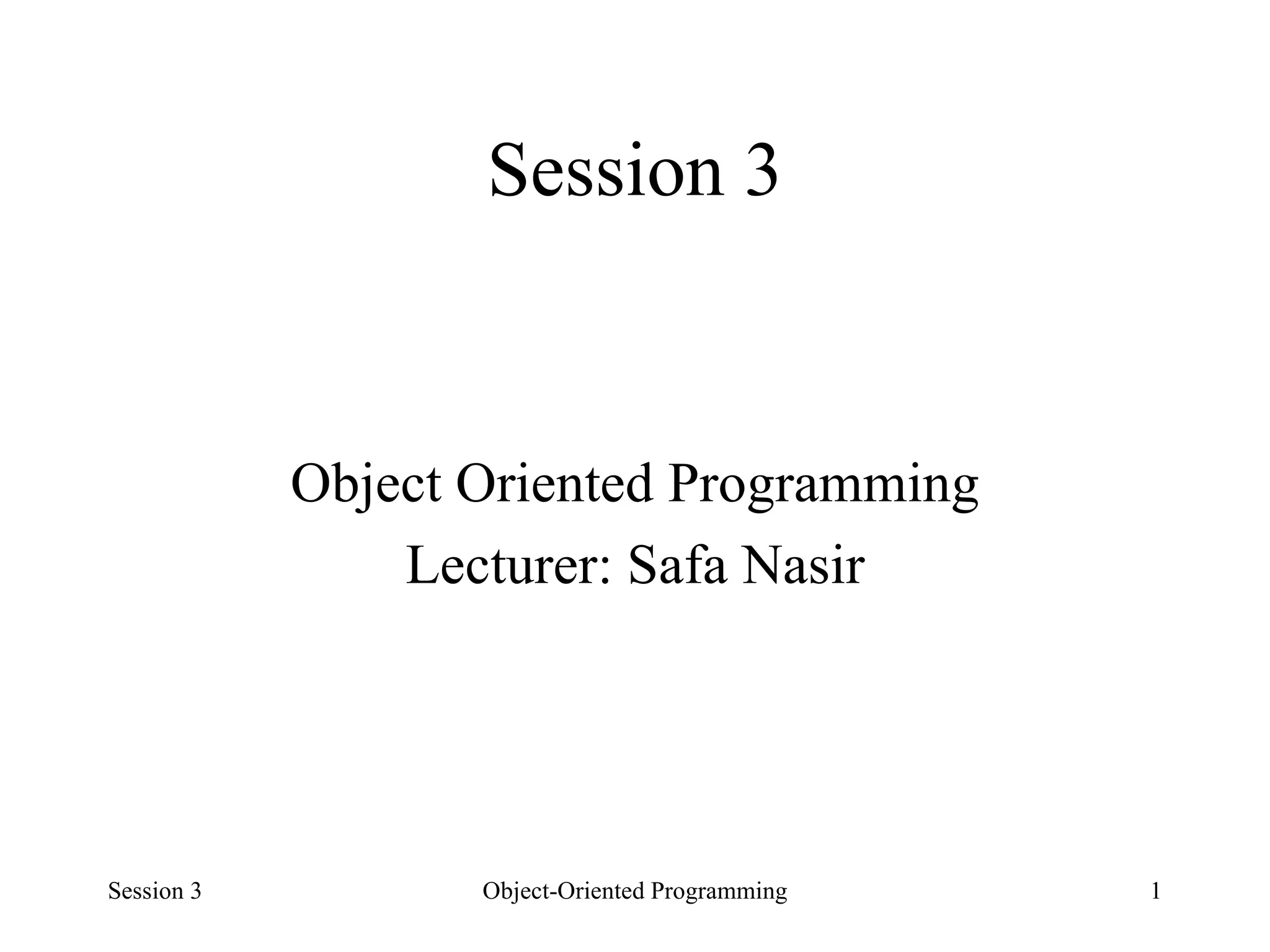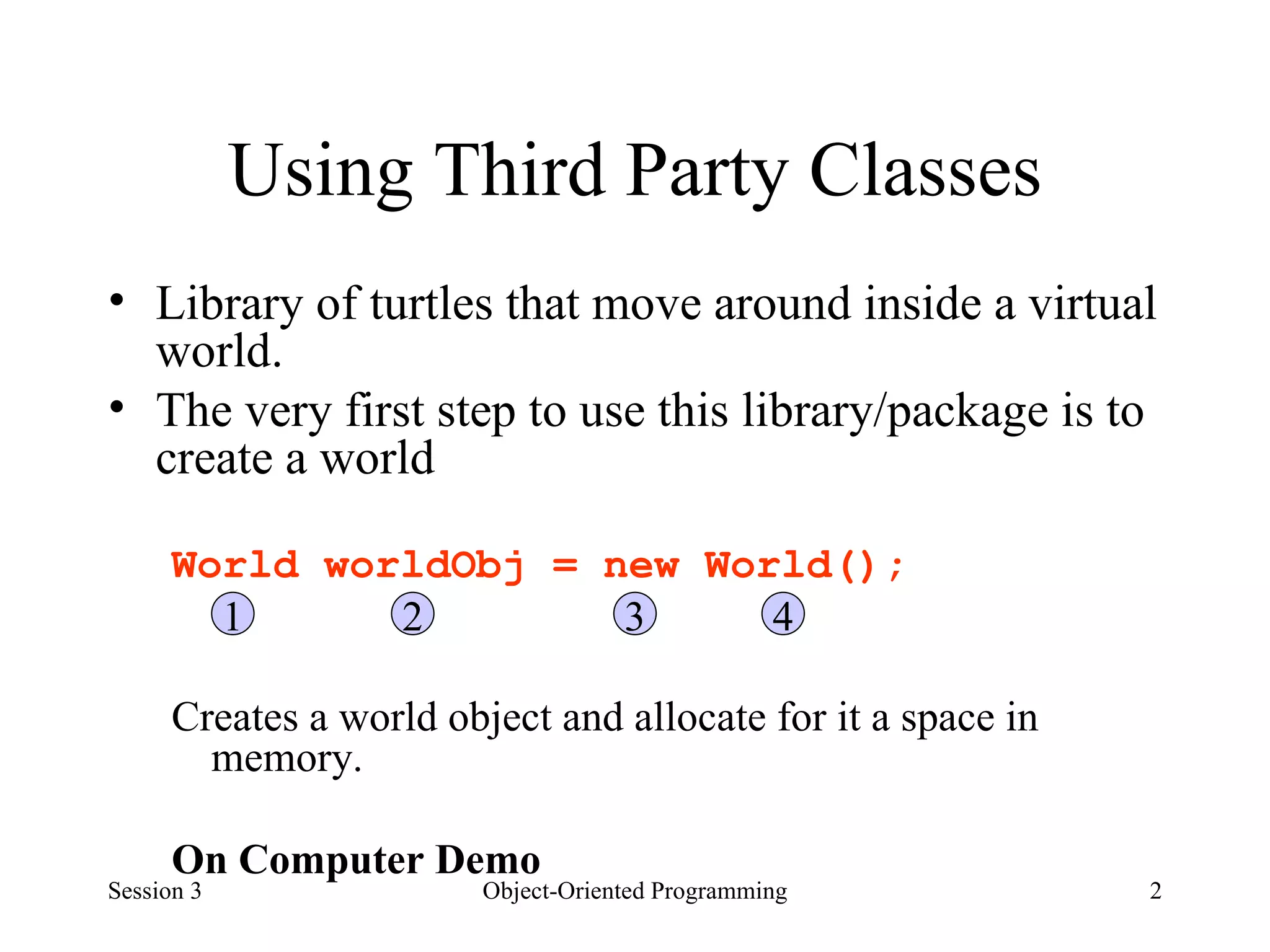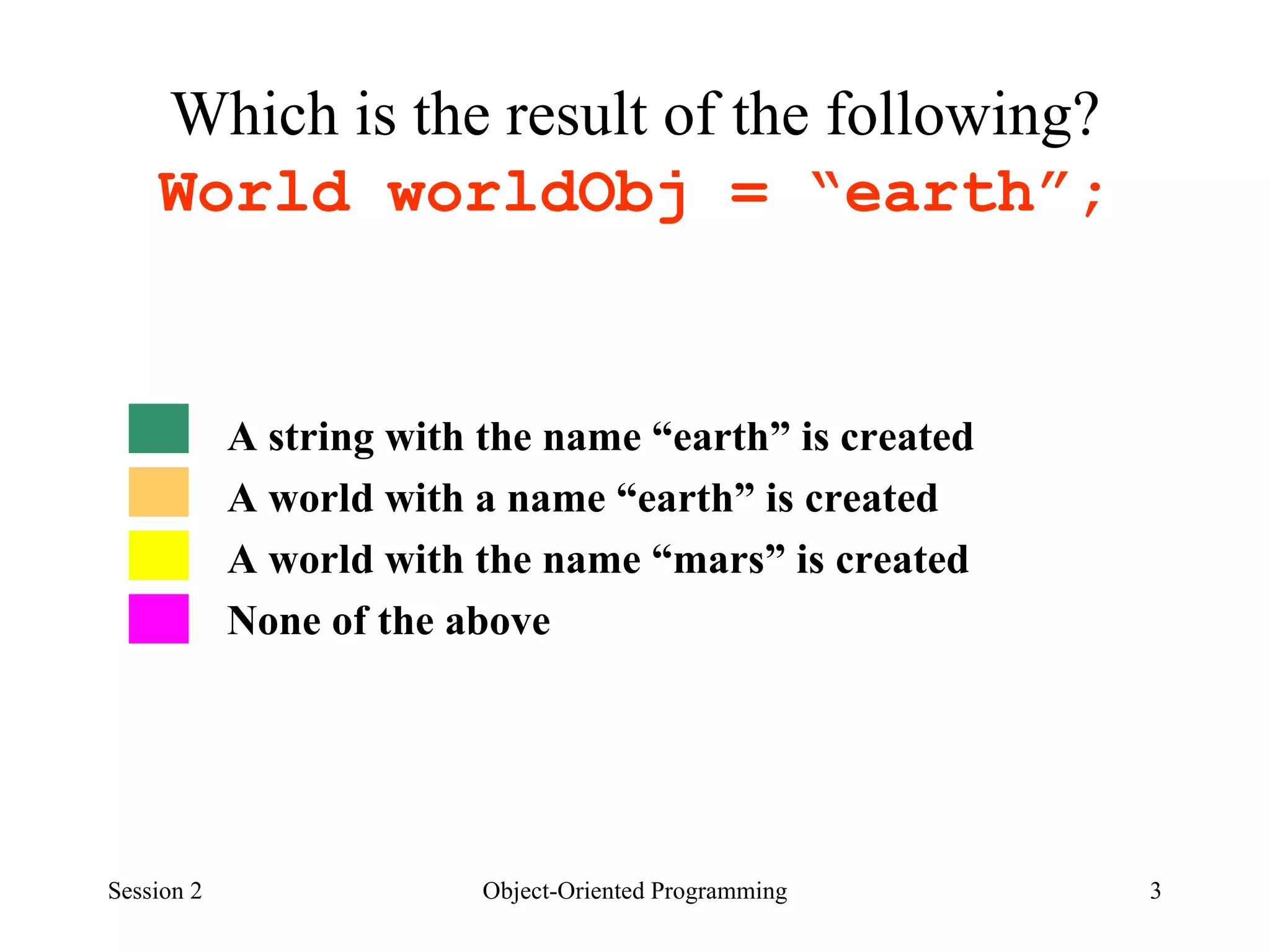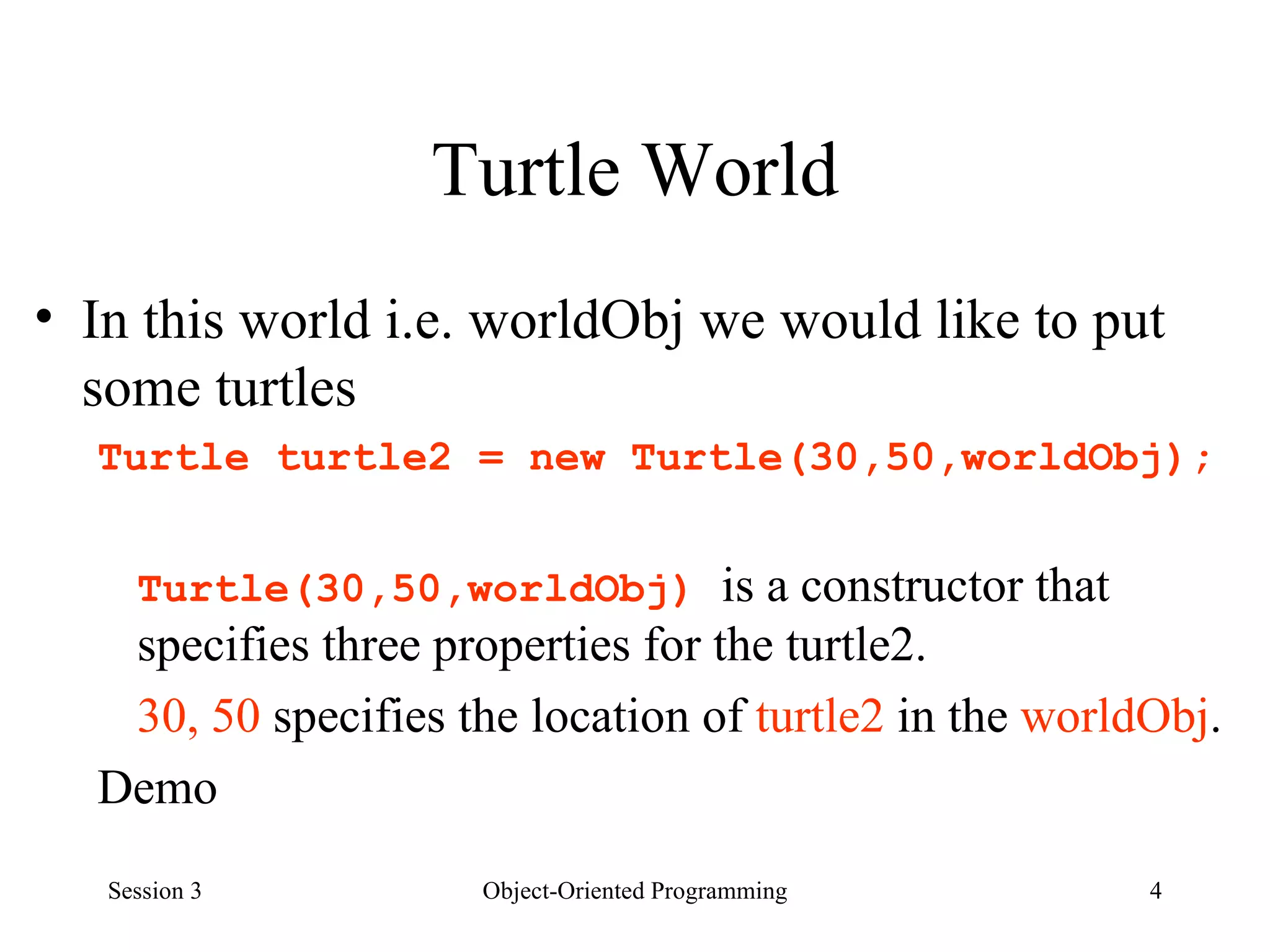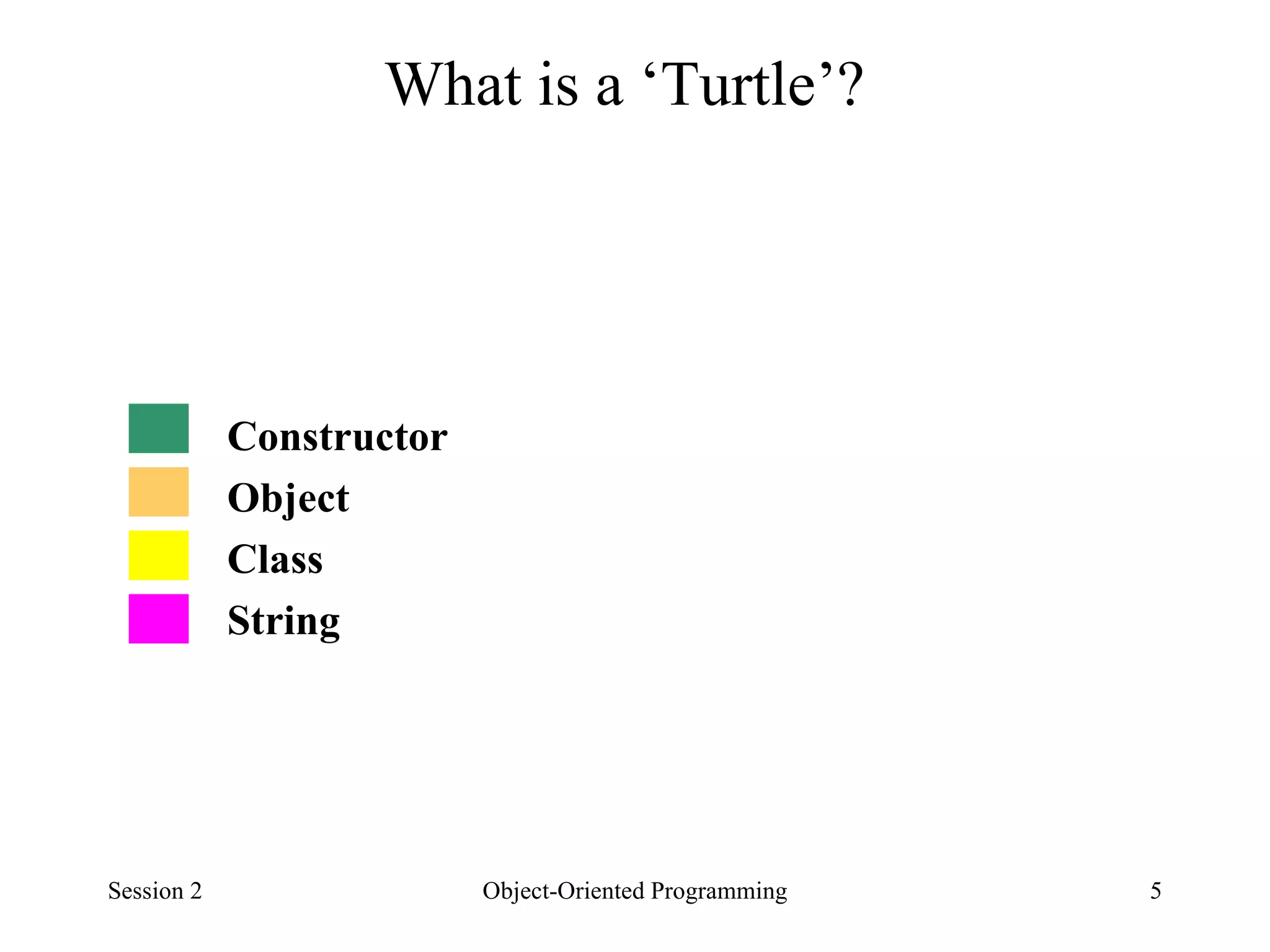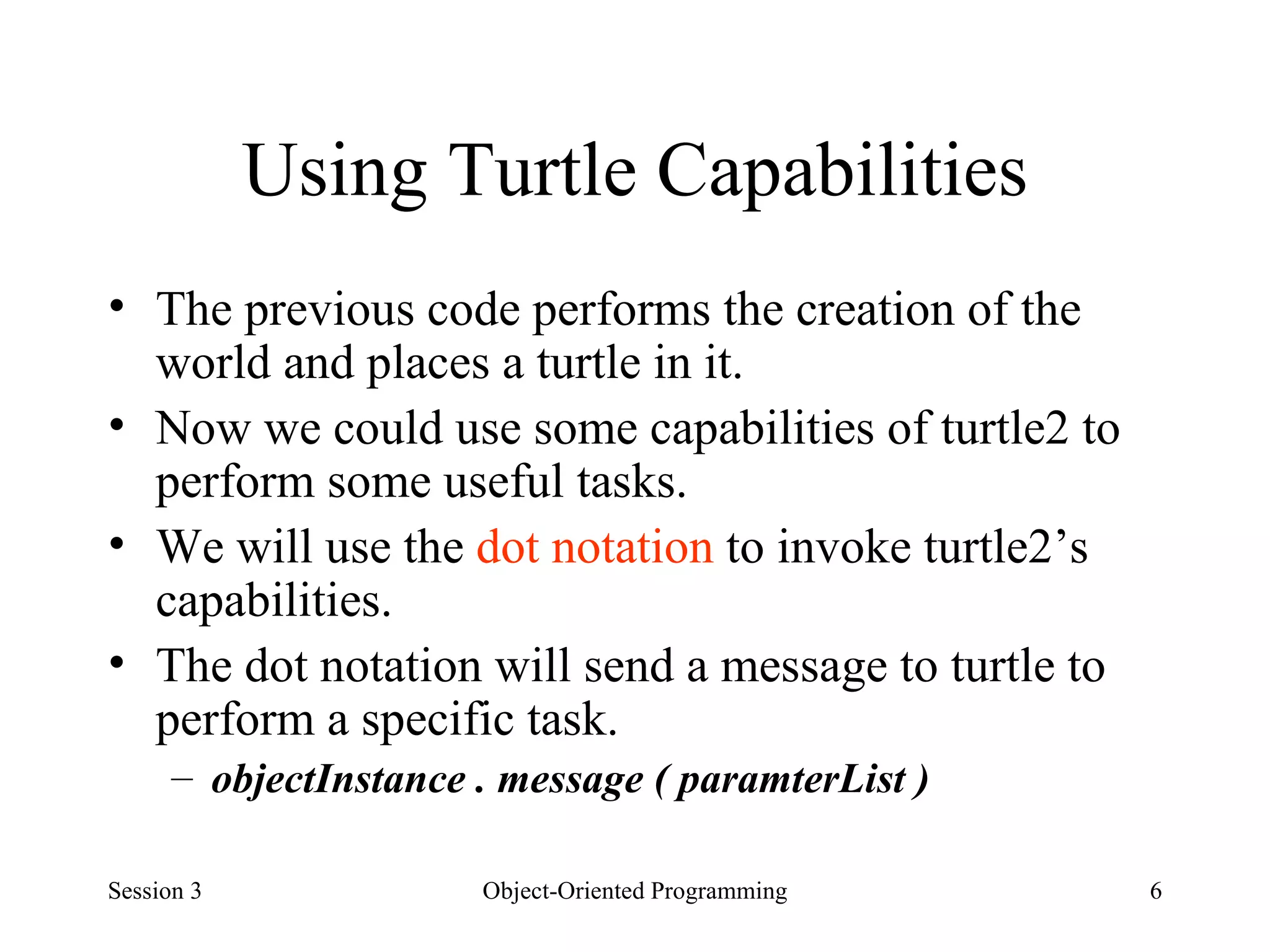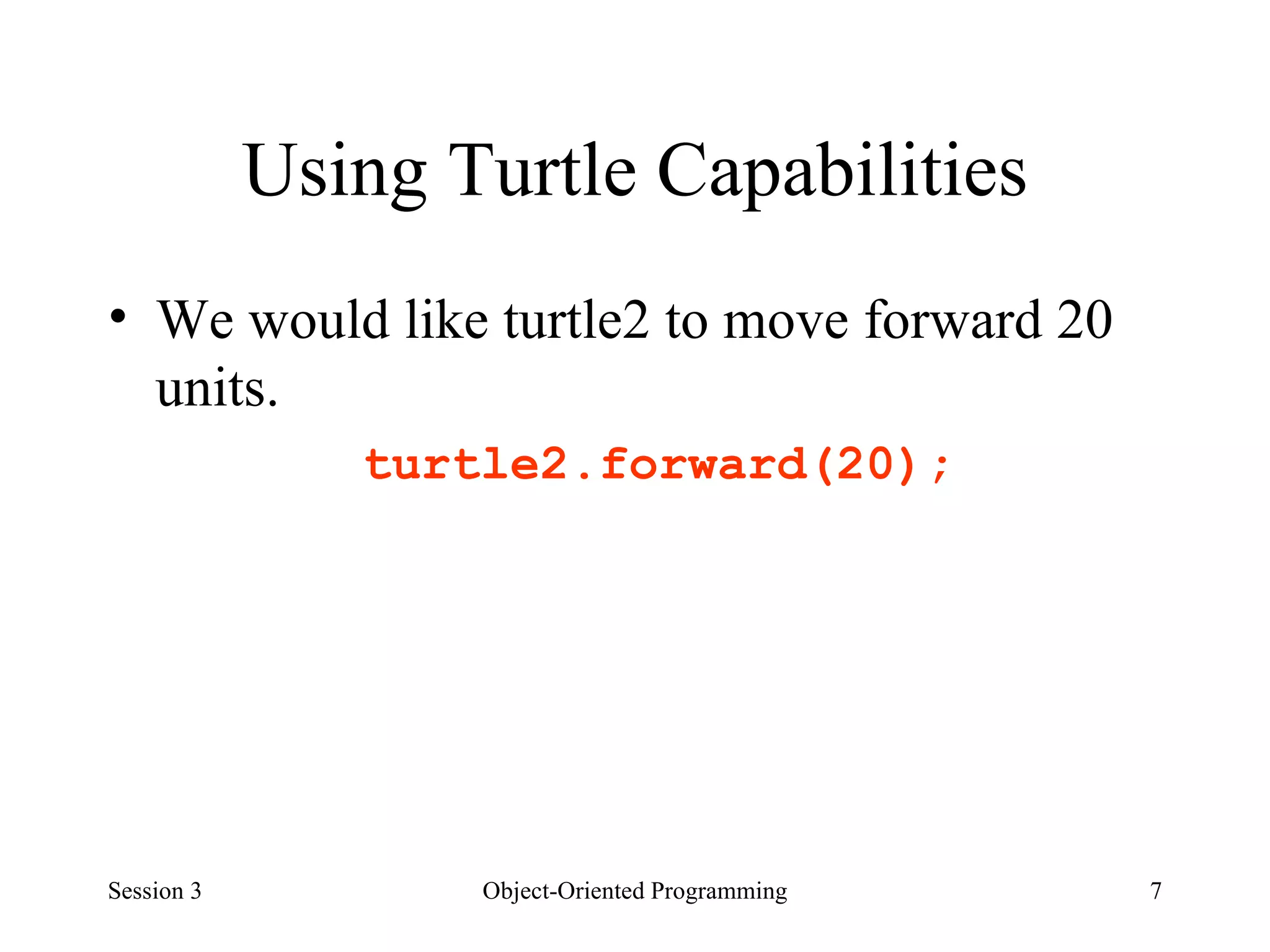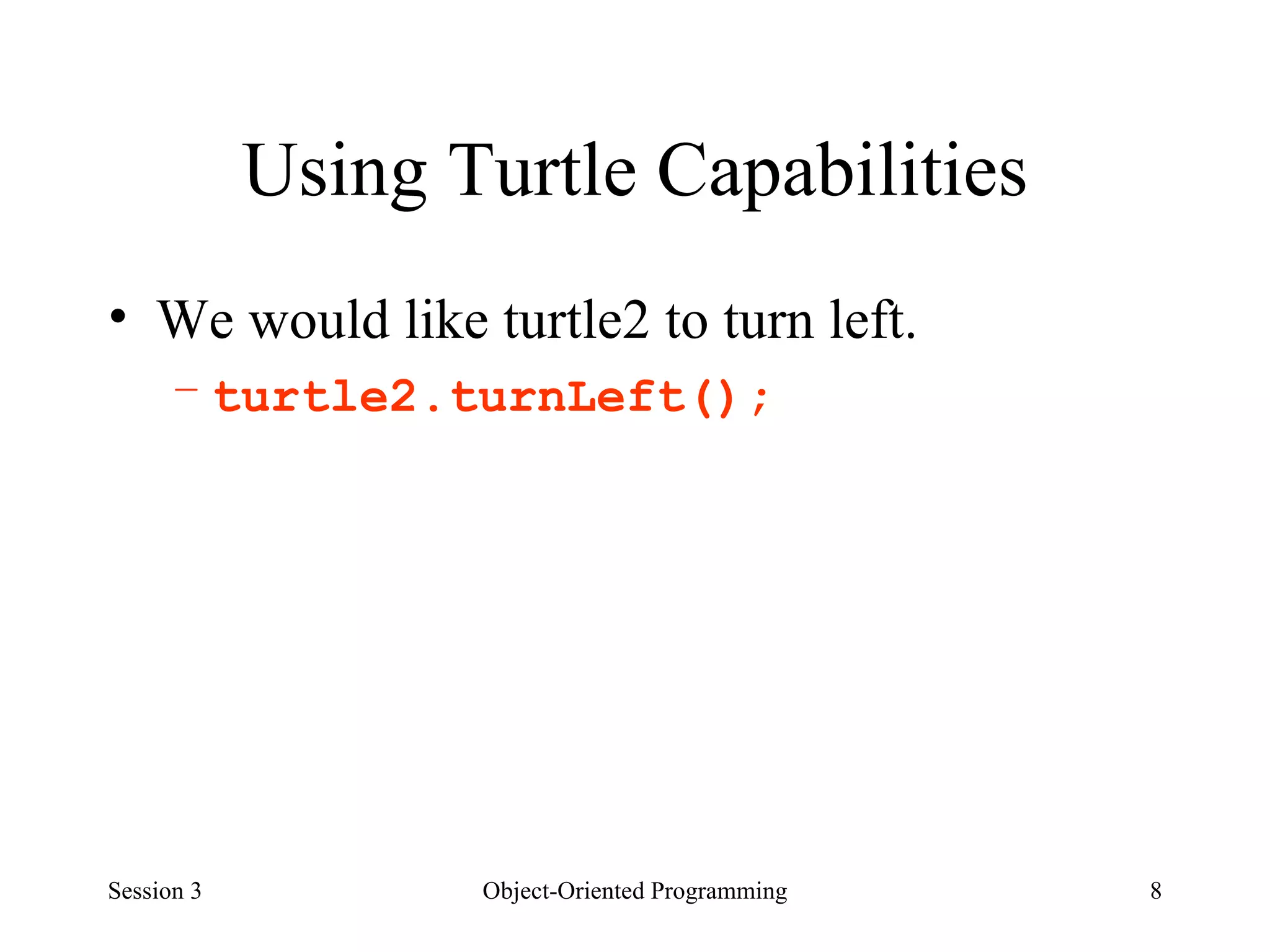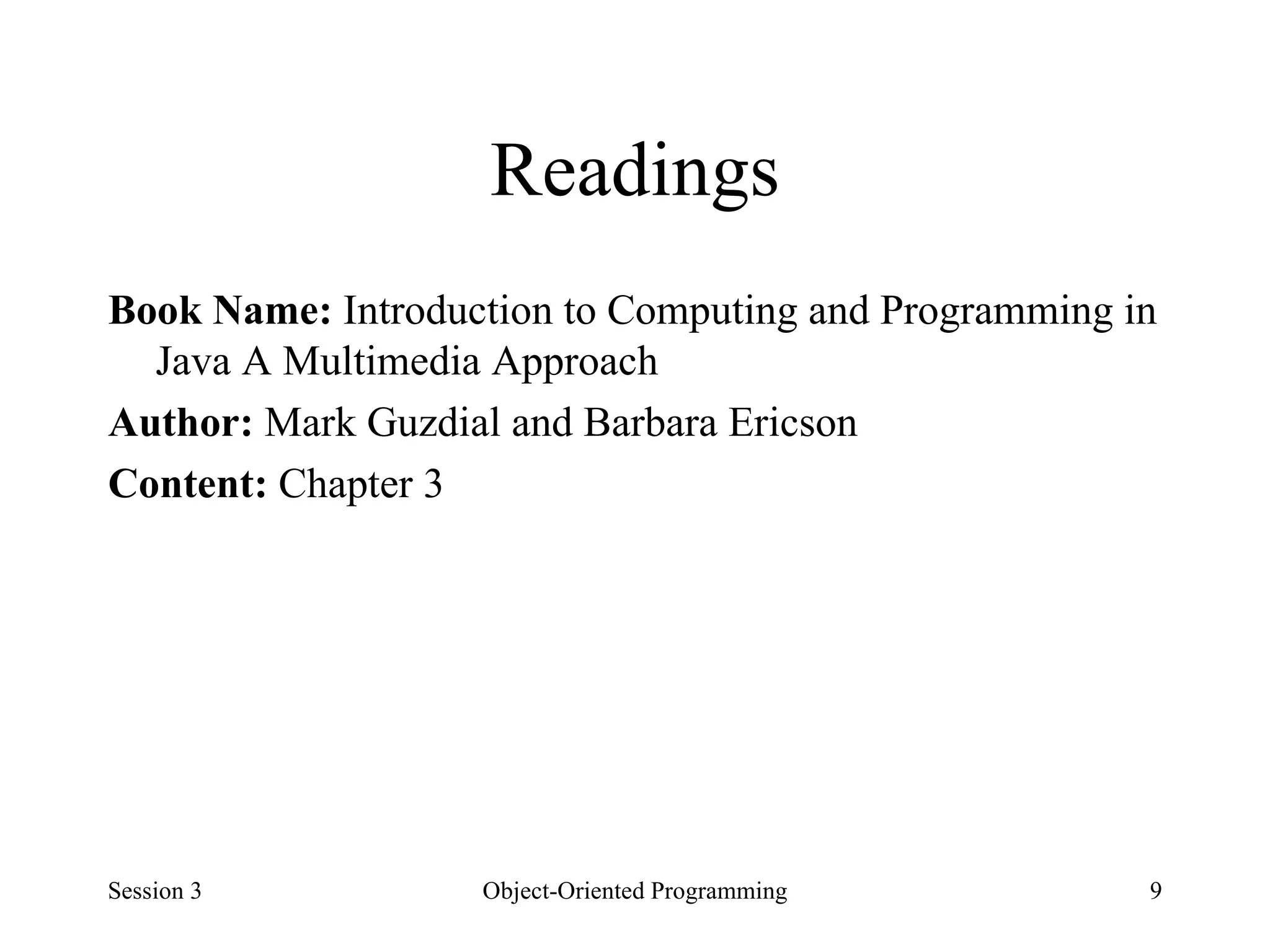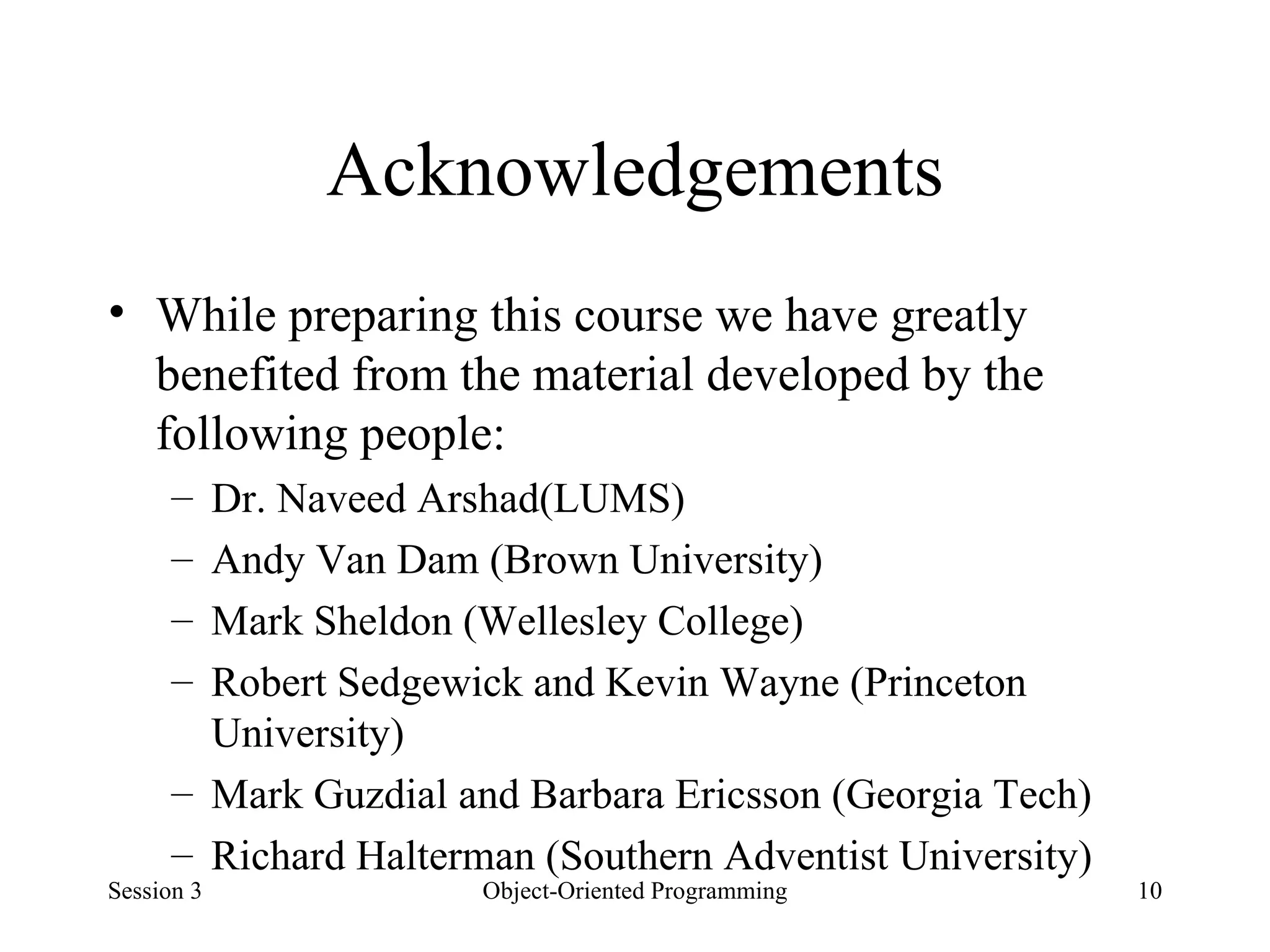This document discusses using third party classes and object-oriented programming concepts like classes, objects, and methods. It introduces a turtle library that can be used to create a virtual world and turtle objects that move within the world. Code examples are provided to create a world object, add a turtle to the world, and call methods like forward() and turnLeft() on the turtle object to move and rotate it. Readings from an introductory Java programming book on object-oriented concepts are also referenced.
